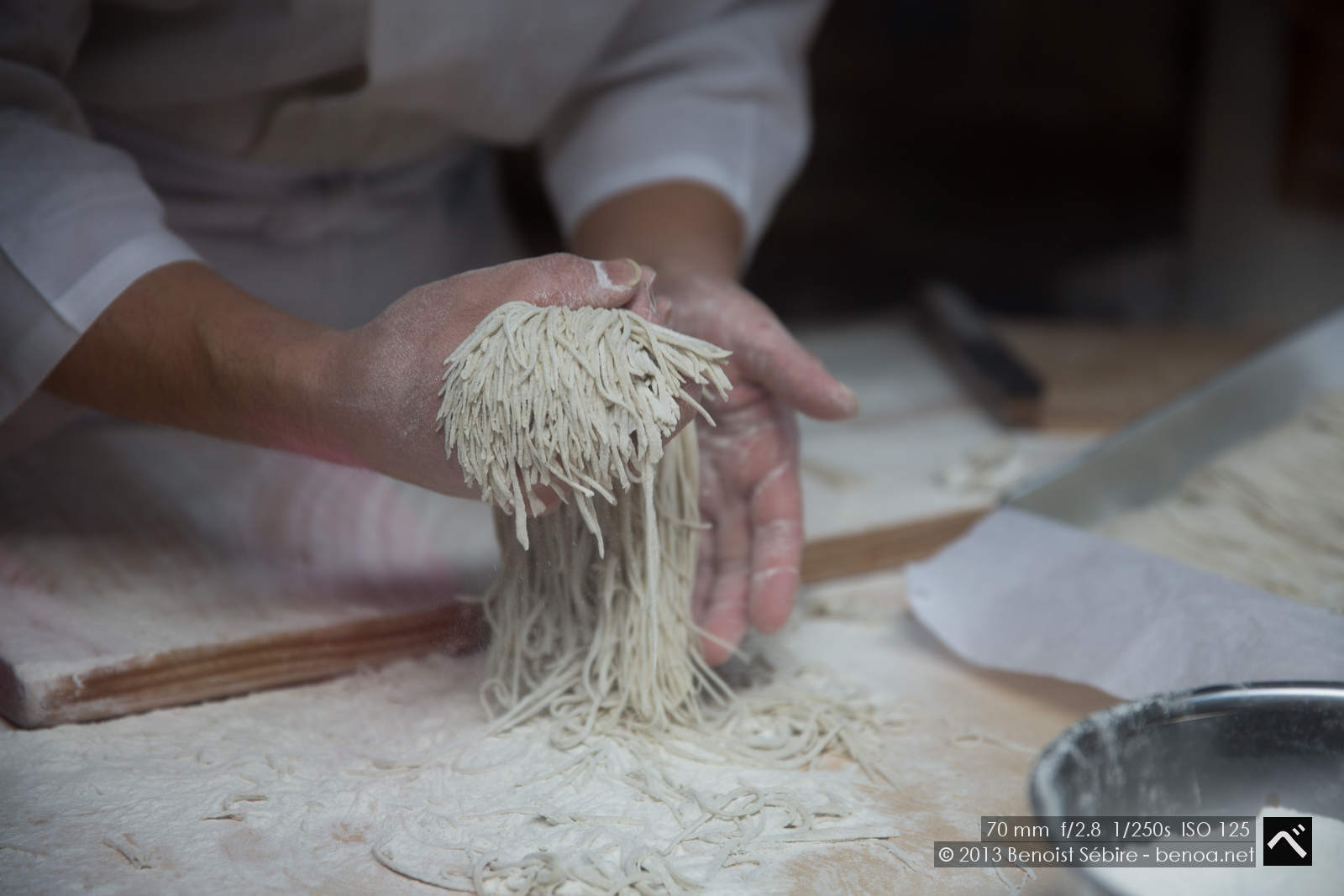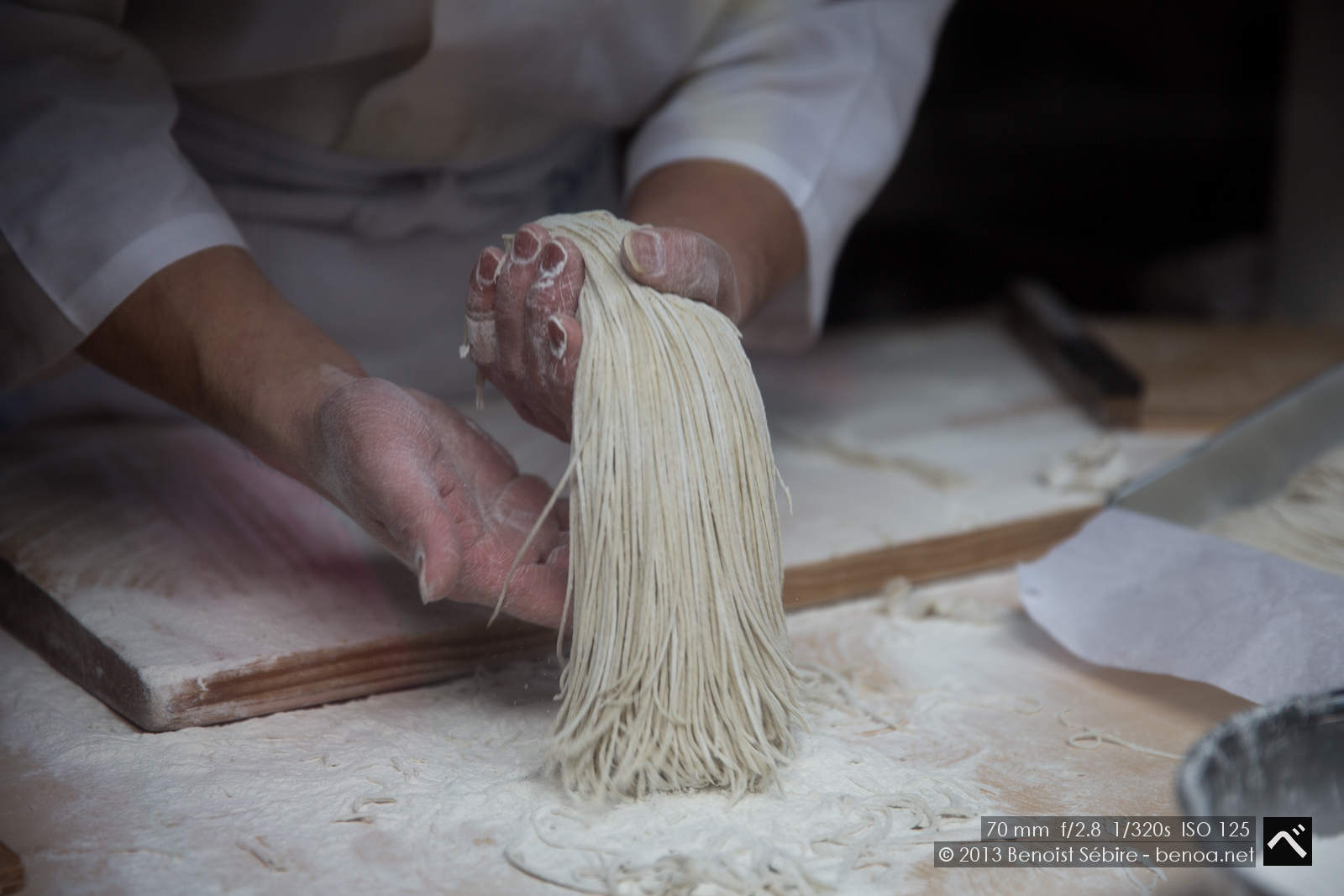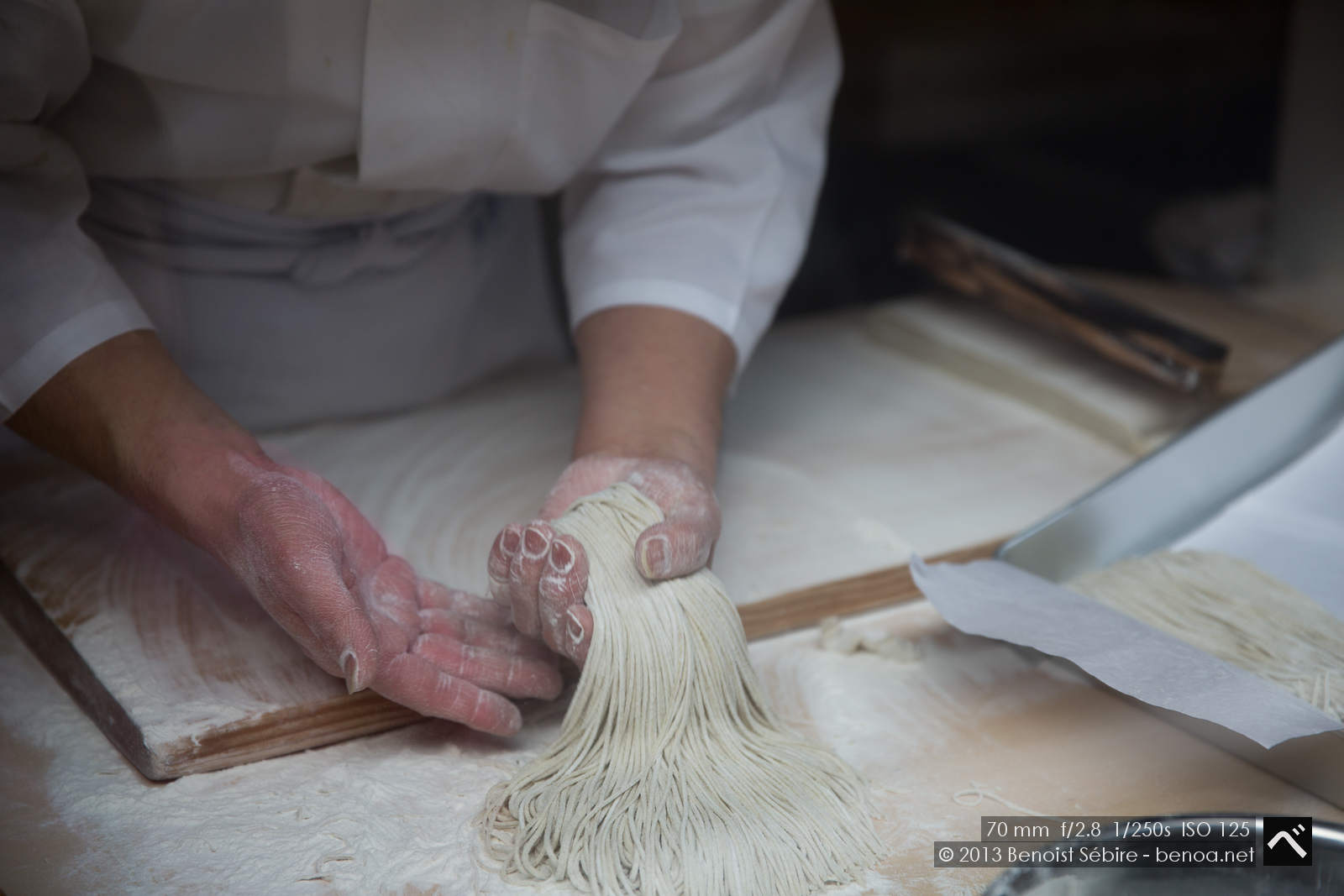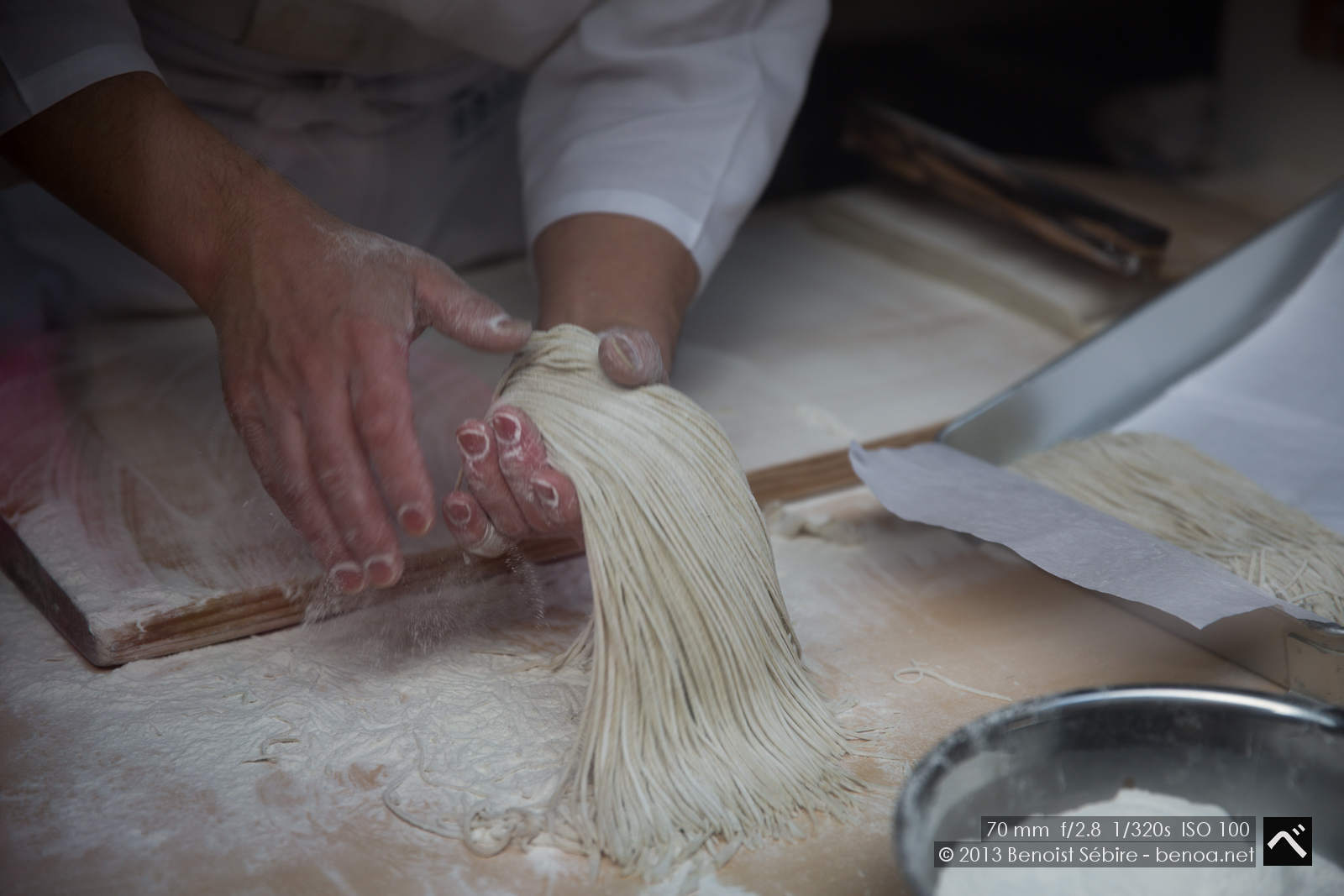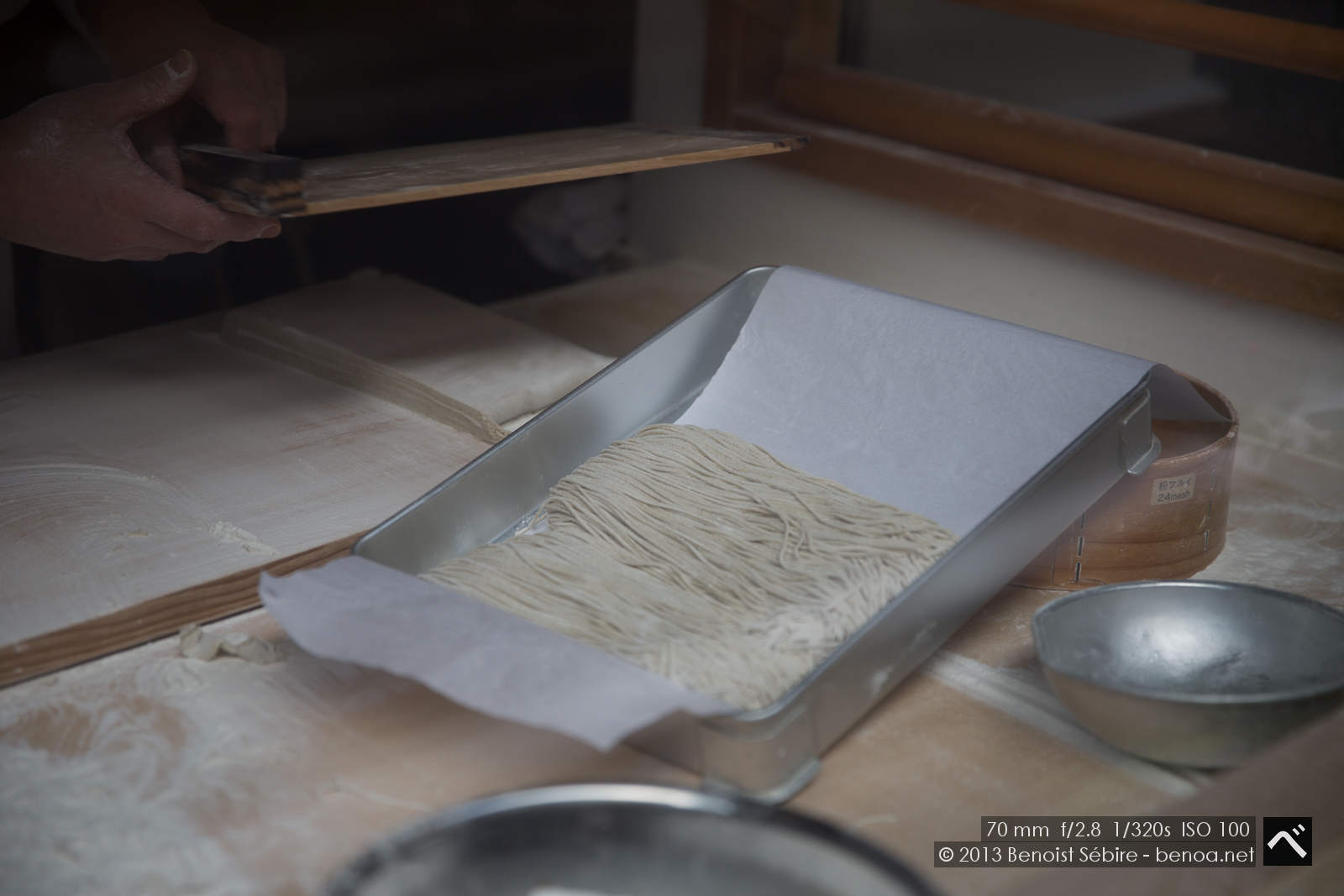Art of making Soba
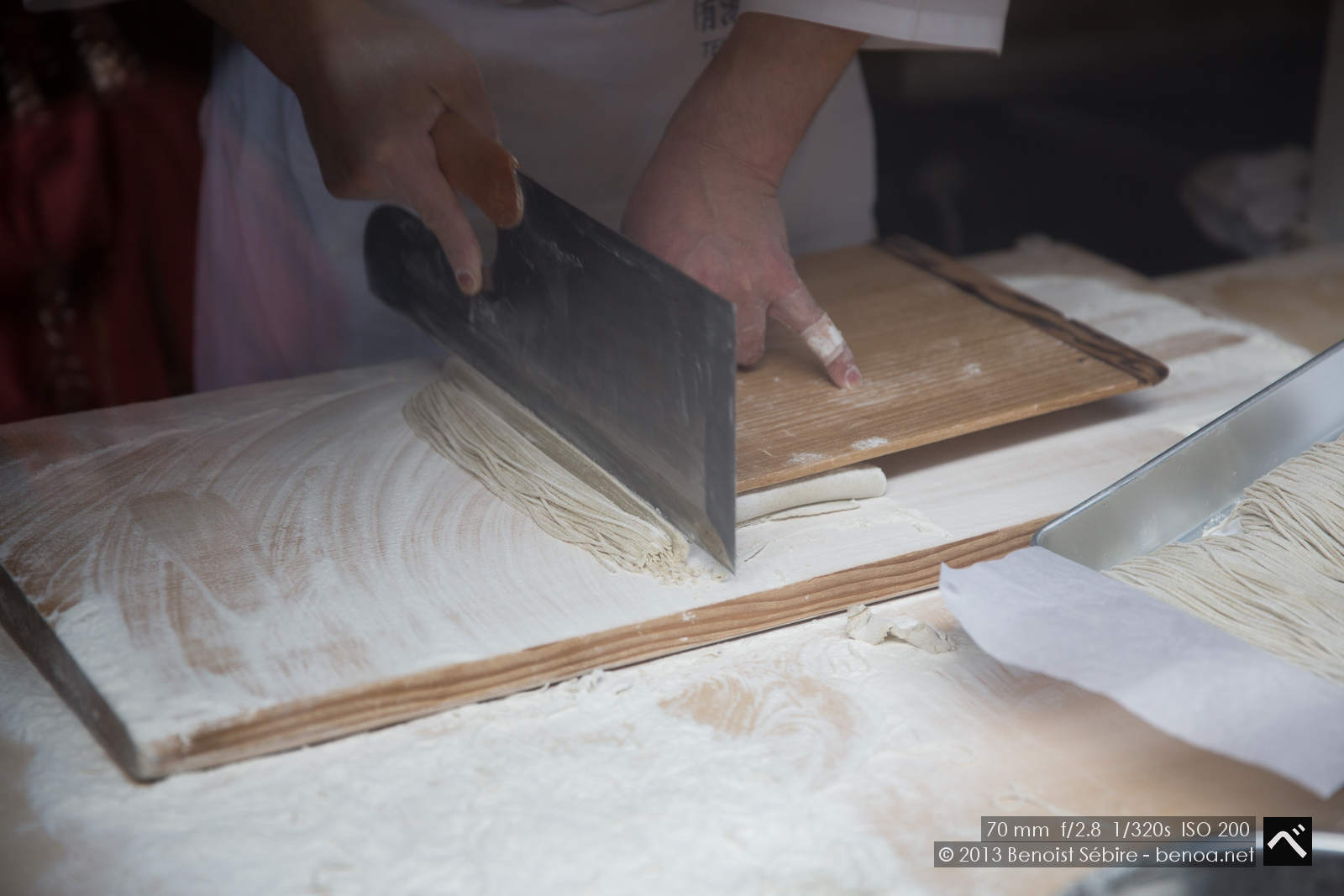
Soba making is the traditional process of creating soba noodles, a popular type of thin noodle made from buckwheat flour, often mixed with a portion of wheat flour to improve elasticity and texture. The art of making soba noodles is revered in Japan, celebrated for its simplicity yet requiring skill and precision.
The Process of Making Soba
- Preparing the Dough:
The process begins with the careful mixing of buckwheat flour and water. The ratio of buckwheat to wheat flour can vary, but traditional soba is typically made with a higher proportion of buckwheat, sometimes up to 100% for authentic, pure soba known as juwari soba. The water is added gradually to the flour in a bowl, mixed by hand to create a cohesive dough. This step requires a skilled touch to ensure the perfect balance between hydration and consistency, as buckwheat lacks gluten and can easily break apart if not handled correctly. - Kneading:
Once the dough comes together, it is kneaded thoroughly to develop its elasticity and create a smooth, pliable texture. The kneading must be done gently and precisely to avoid overworking the dough, which can lead to cracking or stiffness. This step helps to distribute the moisture evenly throughout the dough, making it easier to roll out. - Rolling Out the Dough:
The dough is then rolled out on a flat surface, traditionally using a large wooden rolling pin. The goal is to create an even sheet that is thin but sturdy enough to handle cutting. The rolling process requires careful pressure control to prevent uneven thickness. In traditional settings, expert soba makers use techniques passed down through generations to roll the dough into a perfect, round sheet. - Folding and Cutting:
Once the dough has been rolled out to the desired thinness, it is folded carefully, usually in a series of layered folds. Using a sharp, specialized soba knife, the dough is cut into thin, even strips. The precision of the cut affects how the noodles cook and their texture when eaten. The ideal width for soba noodles is about 1.5 to 2 millimeters, creating a delicate and uniform strand. - Cooking the Noodles:
The freshly cut noodles are then cooked in boiling water for a short period, typically one to two minutes. The cook must watch closely, as overcooking can lead to mushy noodles. Once cooked, the noodles are quickly drained and rinsed in cold water to stop the cooking process and remove excess starch. This step is crucial for achieving the firm, chewy texture that good soba noodles are known for. - Serving:
Soba noodles can be served in various ways, either cold or hot. Cold soba is often served as zaru soba, accompanied by a dipping sauce made of soy sauce, mirin, and dashi. Toppings like nori (seaweed) and green onions can enhance the flavor. Hot soba can be served in a broth with various ingredients such as tempura, vegetables, or slices of duck.
The Art and Tradition of Soba Making
Soba making is considered an art form in Japan, with experienced soba chefs known as sobakiri-shokunin dedicating years to perfect their craft. The process embodies patience, skill, and respect for tradition. The balance of buckwheat and water, the finesse in kneading and rolling, and the precision in cutting all contribute to the final product’s taste and texture.
The tradition of soba making is not only culinary but cultural, connecting people to regional heritage, festivals, and special events. In some parts of Japan, making and serving soba is a communal activity, symbolizing celebration, prosperity, and the spirit of hospitality.
Soba making is fascinating to capture, and these photos show why. First the kneading process. The soba maker presses and folds the dough carefully, making sure it’s worked just right. You can see the concentration in the hands and how every push and fold is deliberate. It’s easy to appreciate how this step sets the foundation for what’s to come. The cutting phase is where things get really interesting. The soba knife, sharp and wide, slices through the dough in quick, steady motions. The photos capture each cut as it creates perfect, thin strips of noodles. You can see the precision here—each noodle is almost identical, showing how much practice goes into getting this part right. Finally, the last photos show the finished noodles laid out neatly. They’re ready to be cooked, but even before that, they look beautiful in their simplicity. These images show the effort and skill behind each step, from mixing to cutting, turning basic ingredients into fresh soba that’s ready to be enjoyed.

